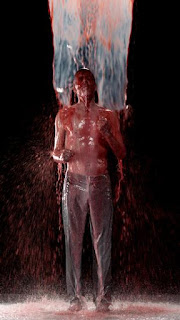The recordings of my zoetrope was successful; although I don't think that the change of the cell could be accurately shown, this may be because the colours were not clearly separated and in a way merged together.
I think the recording of my iMovie could have been more successful, I think this because we were not given a large amount of time to create this. However, the plan we had for the video was thought out and could have been better with more time.
I think the outcome of the Action Painting I created went well since it achieved the look/ style of Jackson Pollock
I think that my reportage drawings could have gone more successful, this is because they don't look as planned as I would have wanted. Although, this is expected for 30 second drawings.
The recording for the Stop Frame Animation went successful as it was well over the time expected and all the photos flowed together well to make an animation.
I think my time based research is effective as it helped me a lot within the workshops and with understanding the meaning of time-based media; I looked at artists such as Helen Green, David Hockey and Bill Viola.
I think that the Ani-Motion exhibit at the Civic helped me understand the variety of time- based art. For example a piece in the exhibition used the Oculus Rift, this gives a whole new experience for the art industry and also opens new opportunities.

For the majority of the workshops, I have produced a storyboard to create the process of the video. I also wrote notes during the workshop to remind myself of the process when I was later writing the blog post for it.
I have used a lot of IT skills throughout this project as it is all based around media. I have also used my understanding of the key words such as Thaumatrope, Time Lapse etc.
I had a problem when attaching videos to my blog posts, I solved this by uploading them to YouTube then embedding the links.
I think I have used my blog well when documenting and recording my processes as it clearly shows the steps I have taken to produce my work; Also, the blog posts are frequent.
To improve my blog posts, I could include more example of the processes my attaching links to other videos.
I think I have managed my time well throughout this project as if I got behind on it I would not understand how to complete/ talk about the processes.
















































